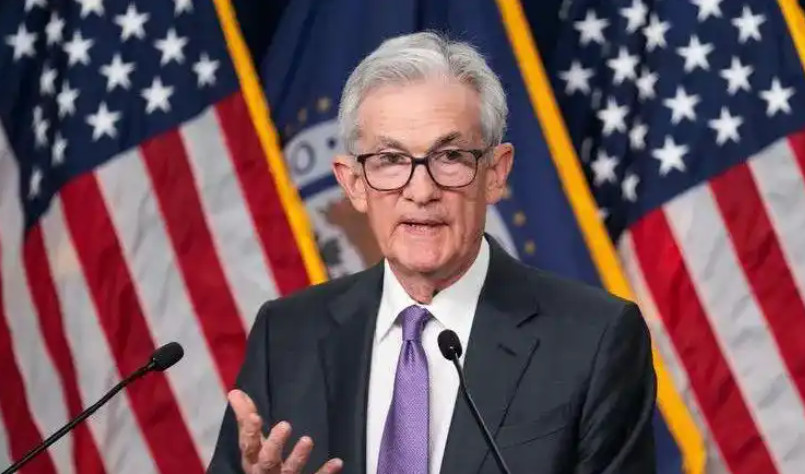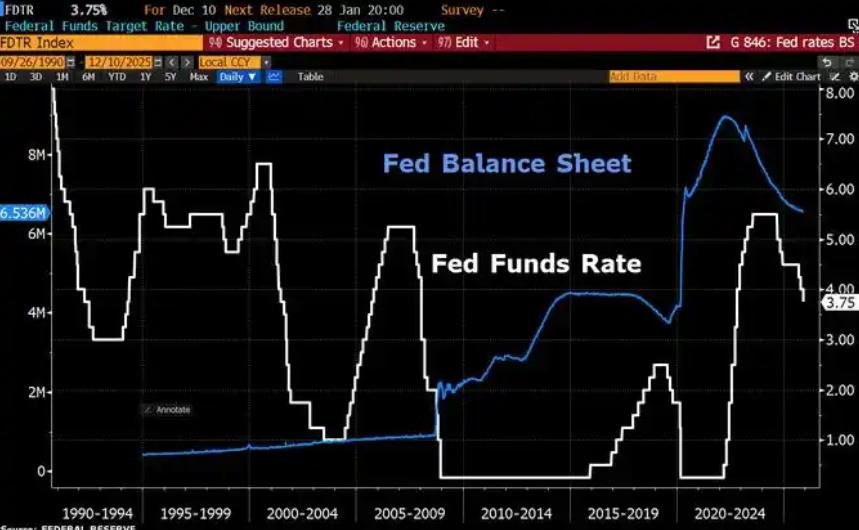
Recently, Federal Reserve Chairman Powell will give a speech at the Jackson Hole Global Central Bank Annual Meeting. This meeting is taking place at a critical juncture of data divergence and rising expectations of interest rate cuts in the US economy. The market generally expects the Federal Reserve to initiate a rate cut in September, but Powell may dilute dovish expectations through "reverse guidance" to avoid being overly constrained by market expectations. This speech may reshape the risk appetite of global financial markets and become a "barometer" for the shift in monetary policy in the second half of the year.
Currently, the money market has fully priced a 25 basis point rate cut in September. The Chicago Mercantile Exchange (CME) FedWatch tool shows a 93% probability of a rate cut in September, with an expected cumulative rate cut of 100 basis points for the year. The supporting logic for this expectation is that the US unemployment rate rose to 4.3% in July, triggering the "Sam's rule", coupled with a significant decline in non farm payroll data, indicating that the labor market is cooling faster than expected; In July, the overall CPI in the United States fell to 2.9% year-on-year, and the core CPI fell to 3.2%, a decrease of 6.1 and 3.4 percentage points respectively from the peak in 2022. The wage growth rate also fell below 3%, and the long-term inflation expectation was anchored at around 2%; The Federal Reserve has initiated aggressive interest rate hikes since March 2022, with a cumulative increase of 525 basis points. The effect of policy transmission to the real economy is gradually becoming apparent, and the growth rate of corporate investment and household consumption is slowing down. However, there are differences within the Federal Reserve regarding the pace of interest rate cuts. Goldman Sachs predicts three interest rate cuts within the year, but some officials are concerned that excessive easing may trigger a rebound in inflation, especially with service inflation and rental prices remaining sticky. Powell's speech needs to find a balance between "supporting employment" and "preventing inflation" to avoid the market forming aggressive expectations of an "accelerated interest rate cut cycle".
Based on historical experience, Powell may downplay dovish expectations by emphasizing "data dependence," highlighting the asymmetric goal of "maximum employment," and warning of the risk of "premature easing. He may reiterate that the pace of interest rate cuts will depend on future economic data, especially non farm payroll, CPI, and retail sales data for August. If the job market does not further deteriorate or inflation recurs, the Federal Reserve may slow down the pace of interest rate cuts. Meanwhile, Powell may emphasize that he "does not seek or welcome further cooling of the labor market," implying that the interest rate cut is aimed at preventing an unexpected rise in unemployment rather than stimulating the economy comprehensively. In addition, he may cite the lesson of "stagflation" in the 1970s, pointing out that if interest rates are cut too quickly, it may lead to a detachment of inflation expectations, forcing the Federal Reserve to raise interest rates more aggressively in the future. This statement will suppress market expectations of a cycle of interest rate cuts, economic rebound, and rising inflation.
If Powell's speech leans towards hawks, the global financial markets may experience the following adjustments: the US dollar index may strengthen, and emerging market currencies may face depreciation pressure; Short term US bond yields are expected to rise, possibly returning to over 4.5%, while long-term US bond yields may be affected by inflation expectations, and the upward trend may be relatively limited; US tech and growth stocks are sensitive to interest rates and may face selling, while gold prices may rebound due to rising real interest rates, but geopolitical risks may provide support; Industrial metals have fallen due to expected cooling demand, while energy prices have increased volatility due to geopolitical and OPEC+production reduction agreements.
The Jackson Hole Conference has always been a "teaser" for the Federal Reserve's policy turning points. In 2022, Powell's hawkish speech put an end to the market's illusion of a "policy shift," and in 2023, it hinted at the possibility of further interest rate hikes. In 2025, Powell needs to walk a tightrope between "supporting the economy" and "maintaining credibility": if his speech is dovish, the market may price the "interest rate cut cycle" in advance, but it may trigger inflation expectations to spiral out of control; If leaning towards hawks, although it can suppress inflation expectations, it may exacerbate financial market volatility and even trigger a reversal of "tight trading". Its core lies in "expectation management" - by downplaying dovish expectations and preserving policy flexibility for the Federal Reserve. The market needs to be vigilant about the short-term reversal of "interest rate cut trading" and focus on the verification of policy paths by economic data in late August. In the game of "soft landing" and "hard landing" in the global economy, every step taken by the Federal Reserve needs to balance data, market expectations, and political pressure, and the Jackson Hole Conference is a microcosm of this complex balance.

Since 2022, the Fed has cumulatively reduced its balance sheet by $2.4 trillion through quantitative tightening (QT) policies, leading to a near depletion of liquidity in the financial system.
Since 2022, the Fed has cumulatively reduced its balance sh…
On December 11 local time, the White House once again spoke…
Fiji recently launched its first green finance classificati…
Recently, the European Commission fined Musk's X platform (…
At the end of 2025, the situation in the Caribbean suddenly…
The U.S. AI industry in 2025 is witnessing a feverish feast…